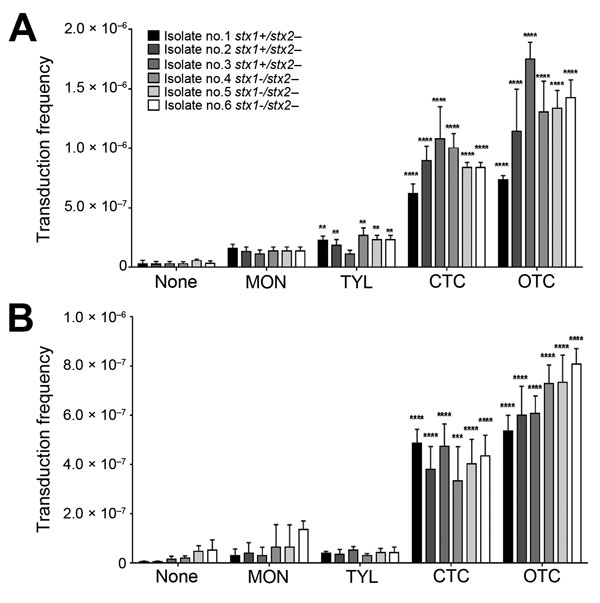Volume 22, Number 5—May 2016
Research
Expansion of Shiga Toxin–Producing Escherichia coli by Use of Bovine Antibiotic Growth Promoters
Figure 3

Figure 3. Emergence of Shiga toxin (Stx)2–positive strains of Escherichia coli from cattle (isolates 1–6) by subtherapeutic bovine antibiotic growth promoters (bAGPs) at 0.1 µg/mL (A) and 0.01 µg/mL (B). Frequency of transfer of Stx phages to bovine E. coli isolates. The Stx pages originated from a detoxified derivative of E. coli O157:H7 EDL933, where stx2 was replaced with a kanamycin resistance cassette. The donor and recipient E. coli strains were co-cultured with or without monensin (MON), tylosin (TYL), chlortetracycline (CTC), and oxytetracycline (OTC). The transduction frequencies were calculated by dividing the number of transductants by the number of recipients. The results show means and SDs of 3 independent experiments. Statistical significance was analyzed by using the Student t-test in comparison with antibiotic-free cultures. **p<0.01, ***p<0.001, ****p<0.0001.